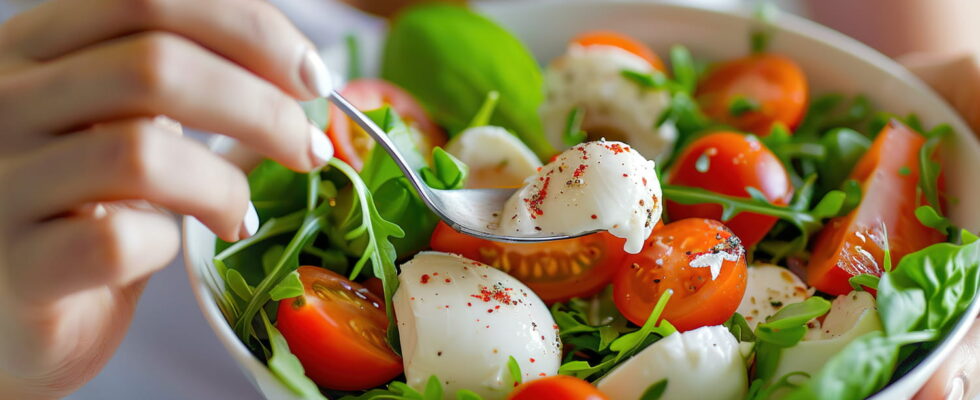It’s the star of our summer salads…
Tomato’s sidekick, we don’t need to introduce it anymore: mozzarella is a fresh, stretched-curd cheese of Italian origin. It is traditionally made from buffalo milk, but the most common form is made from cow’s milk, which has a milder taste. A must-have during the summer season, it can be used in salads as well as in hot dishes such as tomato tarts or vegetable tians, pizzas, gratins, cakes or even paninis. Raw, with a drizzle of olive oil, a little salt and a few basil leaves, it is a real treat.
Mozzarella has a real nutritional interest. It is rich in calcium and proteins, as well as minerals (phosphorus, potassium, selenium, zinc, vitamins A and group B), which is therefore particularly interesting to complete your daily intake. However, mozzarella remains a salty cheese, “It is therefore recommended that people prone to water retention or suffering from high blood pressure be careful. They should not consume too much, either in frequency or in quantity.“, warns Raphaël Gruman, dietician-nutritionist in Paris.
From a purely caloric point of view, mozzarella is among the least caloric cheeses. The cow’s milk version has 229 calories per 100 g (or 68 calories per 30 g portion) while the buffalo milk version has 261 (or 90 calories per portion). The problem is therefore the quantity.Often, we tend to eat a whole ball of mozzarella per person (i.e. 125g) while in practice, it is recommended not to exceed a portion of 30g per day, which is equivalent to 1/4 of a ball of mozzarella. Therefore, mozzarella can be consumed as part of a slimming diet, provided that you limit yourself to 30g“, Raphaël Gruman emphasizes. The seasoning is also to be taken into account: we limit ourselves to a spoonful of olive oil, a pinch of salt, a little chopped chives and a little pepper (we avoid drowning it under a ton of olive oil and balsamic vinegar which increase the caloric value).
Also, be careful not to confuse mozzarella and burrata, which is a mozzarella cream and is much smoother, more melting and much fattier than mozzarella (more than 24% fat compared to 17% for mozzarella). If you are watching your figure, it is better to focus on other cheeses such as goat or sheep cheese which are less caloric and tend to be less fat than cow cheeses such as mozzarella, Camembert, Comté or Parmesan.
